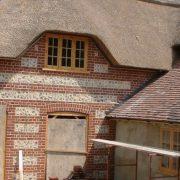5 common mistakes that should be avoided when performing a home restoration
It’s inevitable that your home, furniture and any other structures or items will age with the passage of time. Usually, the look and beauty of aged items can be brought back through restoration.
The restoration process however is not that simple and if approached in the wrong way, can lead to many mistakes such as: spending a lot of money because of poor planning, devaluation of an item or house because of using procedures that strip away its character, among others.
Restoration should not be approached lightly and it should definitely not be done by an unqualified individual. For your item to be restored successfully, you should avoid the following mistakes:
- Working without a plan
Before you proceed with restoration especially for a house, your first move should be to get everything in a plan. Assess the house for any damage top to bottom and in addition to making plans for fixing the damage, make plans for adding improvements that will fulfill the needs of future occupants.
Planning will help you know the scope of the project and also work out how much you are likely to spend.
- Expecting that a house will be easy to ‘flip’ as soon as it’s restored.
Flipping an old house is not that simple. Even after it’s been restored, there’s a likelihood that it won’t be as competitive as a new home.
An even bigger danger is if the restoration destroys the look of a vintage house. For instance, by adding vinyl siding, the installers might end up destroying any architectural details that vintage home buyers would be looking for.
If you are restoring a home with the hope of flipping it, adjust your expectations about deadlines.
- Working with an unrealistic budget
While it’s good to keep your budget at a minimum, it’s a big mistake to set one that is too low such that it’s unrealistic. Working with a very low budget will only lead to poorly or partially done restorations. When setting a budget, make provisions for unforeseen costs to avoid frustrations.
- Poor handling of environmental hazards
Hazardous material like lead paint and asbestos should be handled with extreme caution. Exposing yourself and others to these materials could lead to health complications.
Only work with restorers who have been trained in proper containment, removal and disposal of hazardous material.
- Working with an uncoordinated team
One factor that can lead to a poorly done restoration is working with a contractor who cannot properly coordinate his or her team.
Old homes are very sensitive and cannot be treated in the same way as contemporary homes. Plumbers, electricians and carpenters for instance, can in the process of their work, ruin the vintage look of walls in an old home.
It’s therefore important to work with a contractor who can coordinate members of his or her team so that they don’t damage the value of your property.






